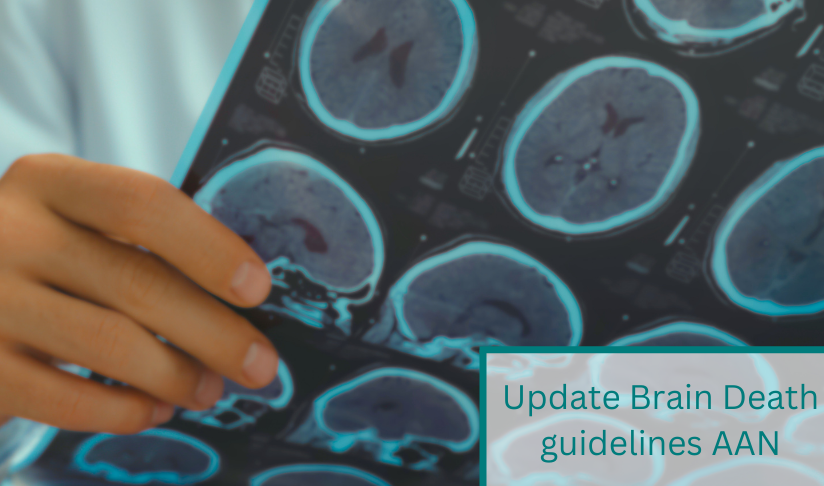
28 Mai 2024 Update Brain Death guidelines AAN
Pediatric and Adult Brain Death – guideline update TCD
The updated guideline revises the 2010 American Academy of Neurology (AAN) guideline for determining brain death or death by neurologic criteria (BD/DNC) in adults, as well as the 2011 guideline from the American Academy of Pediatrics, Child Neurology Society, and Society of Critical Care Medicine for infants and children. The new guideline aims to streamline the BD/DNC determination process by integrating the protocols for both adults and children into one comprehensive document.
Tests of Cerebral Perfusion: Transcranial Doppler Ultrasonography
Recommendation 31 Rationale
Transcranial Doppler Ultrasonography is a widely accessible and relatively easy bedside procedure. It is highly valuable in diagnosing BD/DNC, as it can detect oscillating flow or systolic spikes in major intracranial arteries (including the internal carotid, middle and anterior cerebral, posterior cerebral, basilar, and vertebral arteries), which is consistent with BD/DNC in adults. Its effectiveness lies in its ability to clearly differentiate between the absence of a signal due to technical reasons and the flow patterns seen in patients lacking cerebral perfusion. However, in about 10% of adults, skull thickness can prevent adequate insonation. Despite its proven reliability in adults, this method has not yet been validated for use in children.
Recommendation Statement 31
Clinicians are encouraged to use transcranial Doppler ultrasonography as an ancillary test to support the diagnosis of BD/DNC in adults. However, it should not be used as an ancillary test for children (Level A recommendation).
Citation and Authors
Pediatric and Adult Brain Death/Death by Neurologic Criteria Consensus Guideline
Report of the AAN Guidelines Subcommittee, AAP, CNS, and SCCM; Neurology, 102, 9, (2024), https://doi.org/10.1212/WNL.0000000000207740
